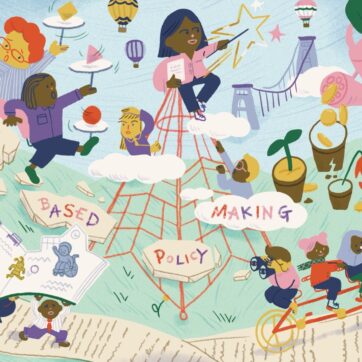Showcasing Arts and Humanities: How much proof do we need?
In 2013, Evans blogged about a regular Institute for Government and AHRC seminar where 15 academics were joined by policymakers to learn how their research can influence public policy (Evans, 2013). Seven years later, the Universities Policy Engagement Network (UPEN) published a blog from Oxford University, ‘Engaging with Policymakers as a researcher in the Arts and Humanities’, and two years later, another blog on ‘What Policymakers want from the Humanities (Holmes-Henderson, 2020; Simkiss, 2022). The contents of these articles nearly 10 years apart are roughly the same. All clearly describe and value the role of the Arts and Humanities in public policy, highlighting the communication and research skills of arts and humanities researchers as well as how their evidence can provide supplementary evidence to form a wider picture. This includes being able to provide ‘knowledge and evidence that elucidates concepts and distinctions [alongside] statistical data’ and discourse analysis being an ‘ideal tool for critically evaluating public policy’ (Simkiss, 2022; Holmes-Henderson, 2020).
The first iteration of the Research Excellence Framework signalled a shift toward the ‘assessment of the wider societal impact of research’ but was quickly criticised as not being trusted to accurately ‘gain a picture of user value and impact’ in its metrics (Williams and Grant, 2018). Jumping to 2021, many universities around the UK celebrated positive REF results, particularly in the Arts and Humanities (WonkHE, 2022). A common criticism associated with the REF is the difficulty of applying Arts and Humanities research to particular metrics that are still rooted in economic value. How do you measure, either in financial terms or quantitative terms, the impact researchers make in areas such as defining wellbeing within policy goals, or the lived experience of children in the justice system, or the role of culture and arts during global pandemics? It is difficult to quantify these positive impacts in a way that satisfies REF reviewers, policymakers and the public.
The other difficulty is how to recognise and reward academics whose research had informed policy thinking, but struggle to be captured via current metrics that favour economic or quantitative based measurements. Additionally, the Arts and Humanities Research Council had the smallest budget of all Research Councils in the UK from 2021-22, with a £73 million difference to the Economic and Social Research Council (UKRI, 2021), another of the smallest in total. As Chris Daley and Dr Matthew Smith report in a recent HEPI article, the 2021 Innovation Strategy mentions Arts and Humanities as individual words three times, and the UKRI Strategy for 2022-27 uses ‘humanities’ twice under AHRC sections (2022). AHRC has only existed since 2005 (its predecessor since 1998), yet it has made huge strides in the advancement and application of Arts and Humanities Research getting into policy, despite its small budget.
Newer models of engagement and recognition
Areas of Research Interest (ARIs) are still relatively new in academic policy engagement. They are a dedicated mechanism for academics and policymakers to understand each other’s needs and interests. Launched in 2015 after a review of Research Councils and their relationship to the academy, it was recognised that Departments needed a more strategic approach (Gov, 2022; Bea & Buckley, 2022). What is interesting about the Areas of Research Interest is that they will become a historical policy document that can track departments’ research interests over time. The current ARIs are beginning to recognise the growing contribution and role of qualitative data and lived experience. This is not to say that Arts and Humanities exclusively use qualitative methodologies, or even do not use quantitative methodologies, but it provides additional forms of knowledges that are just as insightful. For example, the Ministry of Justice actively calls for evidence of experience in an intersectional way, looking at cross-cutting themes within evidence calls and highlighting their desire to receive interdisciplinary evidence that cuts across multiple schools of thought (MoJ ARI, 23). While it isn’t an explicit appeal for evidence from Arts and Humanities specialists, it does signal a changing culture towards valuing evidence that uses different methodological and disciplinary approaches commonly found in the Arts and Humanities and expanding the knowledge they are using to make decisions.
Despite this, UPEN has recently created an Arts and Humanities sub-committee, with academic and professional service members from across several UK Universities and attended by various stakeholders from various organisations. It was mentioned quite a few times in the first meeting of the sub-committee that Arts and Humanities evidence is still under-used and not valued as much as other disciplines. It was discussed that Arts and Humanities research has arguably been forced into a supplementary role instead of being valued in and of itself for the evidence it has, but validated by data that is seen as valuable, trustworthy and objective. As with all relationships that have particular power dynamics, to what end can we ask academics to continue feeling empowered and undertake training, especially when the burden tends to fall on a small group of academics to advocate for this? We need to reflect on the current culture of what we consider to be valuable knowledge and how we accumulate knowledges. Can any knowledge ever be truly objective? How do we interrogate and use knowledges in a reflexive way? Where does our understanding of knowledges and how they accumulate come from? What power dynamics are at play here? When we ask these kinds of questions, we can reflect on why these cultures and dynamics exist and work to change them together.
On the other hand, Paul Cairney has written and spoken extensively on the role of storytelling within public policy, and this approach has also been developed into training for academics with the Open Innovation Team (Cairney, 2021; OIT). Storytelling techniques enhance effective communication between academics and policymakers, and is a brilliant use of creative narrative technique, as well as an example of how the creative arts can be used effectively within public policy. But we should continue to question how much Government is investing in advancing the relationship between policy making and arts and humanities research. Is the relationship between researchers and policymakers an equal, symbiotic one? Or, is it one sided? It is certainly easy to feel that way when senior politicians focus on the narrative that we just need more maths, noting in the PM’s first speech of 2023 that ‘in a world where data is everywhere and statistics underpin every job, letting out children out into the world without those skills is letting our children down’ (BBC, 2023). Whilst this statement is understandable and fair in its own right, seeing it alongside the pressure to phase out ‘low-earning’ degrees (read: Arts and Hums), including for international students, it’s difficult not to feel disillusioned by one’s own political system as an early career academic knowing that only a particular kind of evidence and data is seen as of value (BBC, 2017; Guardian, 2022). Just this week, the British Academy published a new briefing outlining recommendations to ‘harness the contributions of SHAPE alongside STEM, to the UK’s research and development ecosystem’, with the Chief Executive noting that ‘weirdly our R&D stats in the UK often overlook SHAPE research…which makes no sense as the creative economy grows.’ (Shah, 2023).
Where is the tension?
Is there instead a disconnect, then, between senior politicians and decision makers, and those on the ground that academics work with? It is never as clear cut as an ‘us vs them’ archetype. We are certainly seeing progress. In 2014 an APPG on Arts for Health and Wellbeing was created, and has created a number of policy briefs, short reports and podcasts to explain the importance of art on health. There are lots of excellent examples of Arts and Humanities researchers working with APPG’s and other government and parliament bodies. For example Dr Arlene Holmes-Henderson (University of Durham) has contributed their research, alongside other colleagues such as Dr Jasjit Singh (University of Leeds) to support widening access for young people in the Oracy APPG and Political Literacy APPG (Oxford, 2022). In late 2022, Professor Jo Fox, via the London Research and Policy Partnership, showcased a multitude of Arts and Humanities contributions to policy, including in ‘areas we might not expect’ such as health (Fox, 2022). They go on to say that the latest REF (Research Excellence Framework) also highlighted the variety of contributions that Arts and Humanities, in particular the way in which Arts and Humanities evidence has been used by policymakers to support participatory research, navigate ethical challenges and better understand policy problems that policymakers are facing (Fox, 2022). During the COVID-19 Pandemic, AHRC supported the ‘Pandemic and Beyond’ project, which brought together ‘70 teams of researchers across the UK’ that pooled together relevant research on ‘culture, society, law, Arts and Health’ (Pandemic and Beyond, University of Exeter, 2023). In a seminar hosted by the Institute for Government, a think tank that examines the relationship within evidence informed policy and supports best practice to achieve this, they noted that the ‘Arts and Humanities’ are at the forefront of efforts to understand the social, cultural and economic consequences of the Pandemic’ (Lilly, Institute for Government, 2022). There are a multitude of organisations and bodies dedicated to this work, such as Culture Commons, the British Academy and its SHAPE project, and many more that are doing incredible work in this space. All of this would suggest that there is a strong, positive relationship between Arts and Humanities researchers and policymaking. But we are still seeing barriers, significant problems, under investment and a culture that does not reflect this.
Moving forward
I’d like to finish with just presenting two quotes, 10 years apart.
In 2008, Baroness Onora O’Neill wrote the foreword for the British Academy’s publication titled ‘Punching our Weight: The Humanities and Social Sciences in Public Policy Making’. She summarises that the findings ‘reveal a serious concern that policymakers are not realising the full potential of contributions that humanities and social sciences can make to public policy making’ (2008, 3).
In 2020, the then Director of the Institute for Government Bronwen Maddox wrote that ‘any government needs to ensure that a wide range of academic thinking is included in the policy making process’.
What will we be saying in another 10 years? Hopefully something a little different…


